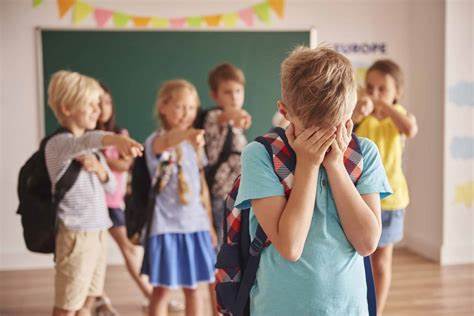
Standing Up: The Vital Role of Bystanders in School Bullying Prevention
In the heart of every school, the atmosphere is shaped not only by teachers and students directly involved in incidents but also by those who witness them. Bystanders are individuals who observe bullying behavior but are not directly involved as the aggressor or the victim.
While their presence may go unacknowledged, bystanders hold a unique and powerful position in the dynamics of bullying. The role they play is essential in preventing bullying and fostering a healthy, supportive school environment. This article explores the critical impact of bystanders in bullying situations and how they can take action to make a difference.
Bystanders often experience mixed feelings when they witness bullying. They might feel fear, confusion, or the desire to help but worry about the potential repercussions of intervening. This emotional turmoil can lead to inaction, further allowing bullying behaviors to persist.
However, research shows that when bystanders choose to act, they can significantly reduce the frequency and intensity of bullying. Their actions can transform a negative experience into a more positive outcome, not only helping the victim but also creating a supportive environment for all students. One of the primary ways bystanders can intervene is through direct action.
This approach involves the bystander stepping in to stop the bullying when it occurs. It requires a great deal of courage and confidence, as the bystander risks potential backlash from the aggressor. For example, a student might confront the bully by saying something as simple as “That’s not cool, stop it.” Such a statement can go a long way in discouraging the bully and showing support for the victim.
Direct intervention, while effective, is not always the safest route. Therefore, bystanders should assess the situation and gauge whether it is safe to intervene directly. In situations where direct intervention may not be appropriate, bystanders can still play a critical role in preventing bullying by providing support to the victim. Often, victims of bullying feel isolated and powerless.
A simple act of kindness, such as sitting with the victim at lunch or inviting them to join a conversation, can help rebuild their sense of self-worth. Additionally, bystanders can offer to accompany the victim to talk to a trusted adult or report the bullying to school authorities.
This kind of support not only helps the victim feel less alone but also signals to others that bullying is unaccepted behavior within the school community. The influence of bystanders reaches beyond individual incidents of bullying. When a culture of support is established among students, the likelihood of bullying diminishes. Schools can foster this culture by implementing programs that educate students about bullying and encourage open discussions.
Workshops that role-play scenarios can empower students by teaching them how to recognize bullying and respond effectively. When bystanders are equipped with knowledge and confidence, they are more likely to take action when they witness bullying. Peers who intervene in bullying situations can inspire others to do the same, creating a ripple effect that strengthens the overall school environment.
Parents and educators too have a responsibility to cultivate the role of bystanders in bullying prevention. Schools should emphasize the importance of peer intervention and support within their anti-bullying initiatives. Educators can create a safe and welcoming atmosphere where students feel comfortable sharing their experiences and speaking out against bullying.

Open channels of communication between students, parents, and teachers create a robust support system that nurtures empathy and responsibility. Social media has emerged as a powerful tool in modern communication and can also influence the role of bystanders in bullying prevention. Cyberbullying is an unfortunate extension of traditional bullying, and bystanders in the digital space can play an active role here too. By speaking up against cruel comments or supporting individuals who are targeted online, bystanders can demonstrate that bullying behavior is unacceptable, regardless of whether it occurs in person or on the internet.
Encouraging students to use social media platforms responsibly and to take a stand against cyberbullying is crucial in today’s technology-driven society. Finally, it is essential for bystanders to remember that they are not alone in their role.
Building a community of supportive peers can create a strong front against bullying. Friend groups can engage in discussions about the importance of standing up for one another. Students can participate in clubs or organizations that focus on kindness, empathy, and bullying prevention. By collectively committing to create a positive environment, bystanders can extend their influence and inspire change not only within their immediate circle but across the entire school.
In conclusion, bystanders are pivotal in the fight against bullying in schools. Their decision to take a stand can significantly shift the dynamics of bullying incidents. By promoting positive behavior, providing support to victims, and engaging in educational initiatives, bystanders can create a culture of caring and respect. When a community of empowered bystanders emerges, it cultivates an atmosphere where bullying cannot thrive, and everyone benefits. Let us encourage our students to become active participants in creating a safer, more supportive school environment for all. #Bystanders #BullyingPrevention #SupportEachOther #Empowerment #StopBullying #KindnessMatters #SchoolSafety
